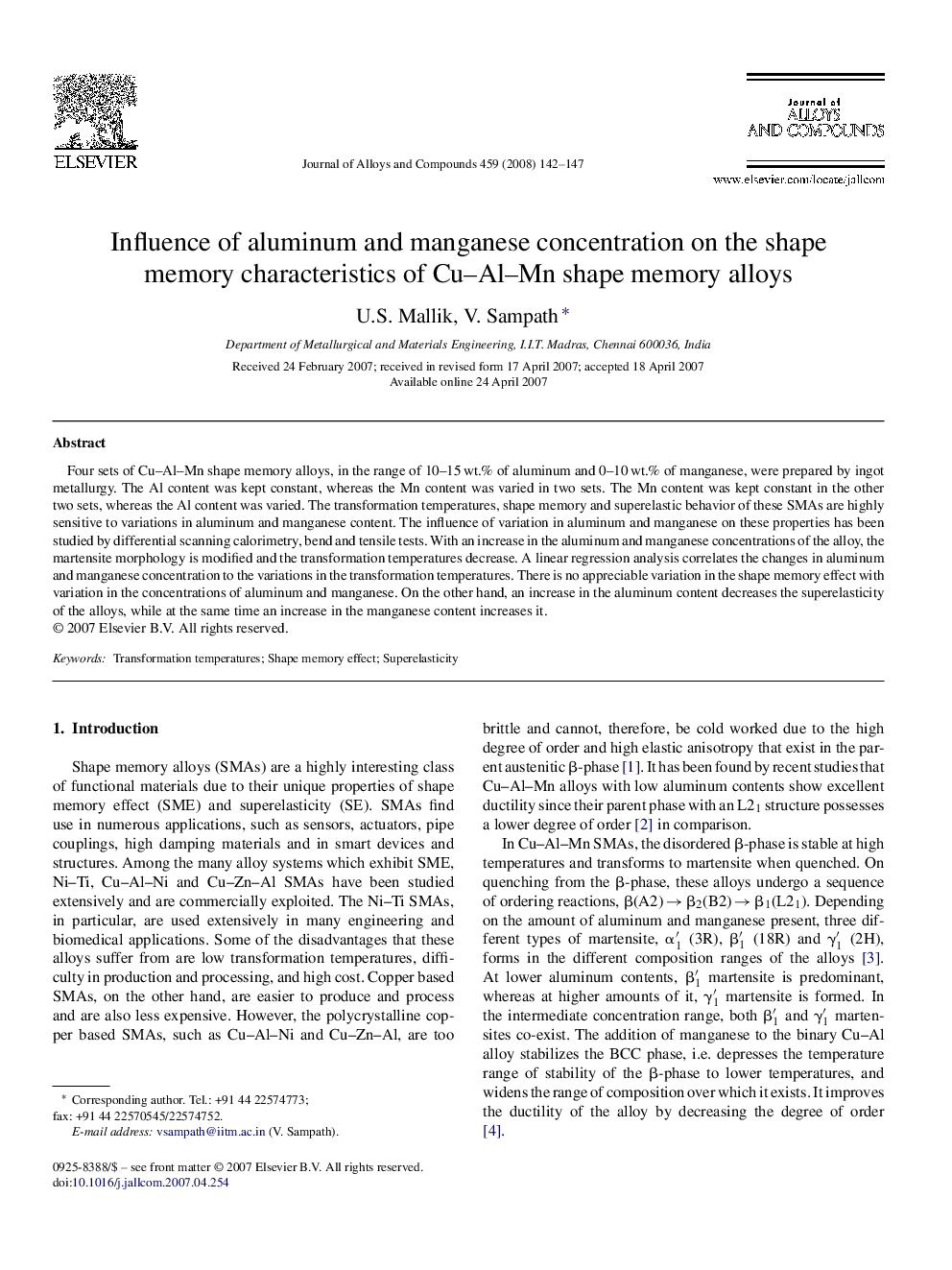| Article ID | Journal | Published Year | Pages | File Type |
|---|---|---|---|---|
| 1624506 | Journal of Alloys and Compounds | 2008 | 6 Pages |
Four sets of Cu–Al–Mn shape memory alloys, in the range of 10–15 wt.% of aluminum and 0–10 wt.% of manganese, were prepared by ingot metallurgy. The Al content was kept constant, whereas the Mn content was varied in two sets. The Mn content was kept constant in the other two sets, whereas the Al content was varied. The transformation temperatures, shape memory and superelastic behavior of these SMAs are highly sensitive to variations in aluminum and manganese content. The influence of variation in aluminum and manganese on these properties has been studied by differential scanning calorimetry, bend and tensile tests. With an increase in the aluminum and manganese concentrations of the alloy, the martensite morphology is modified and the transformation temperatures decrease. A linear regression analysis correlates the changes in aluminum and manganese concentration to the variations in the transformation temperatures. There is no appreciable variation in the shape memory effect with variation in the concentrations of aluminum and manganese. On the other hand, an increase in the aluminum content decreases the superelasticity of the alloys, while at the same time an increase in the manganese content increases it.
